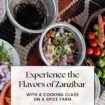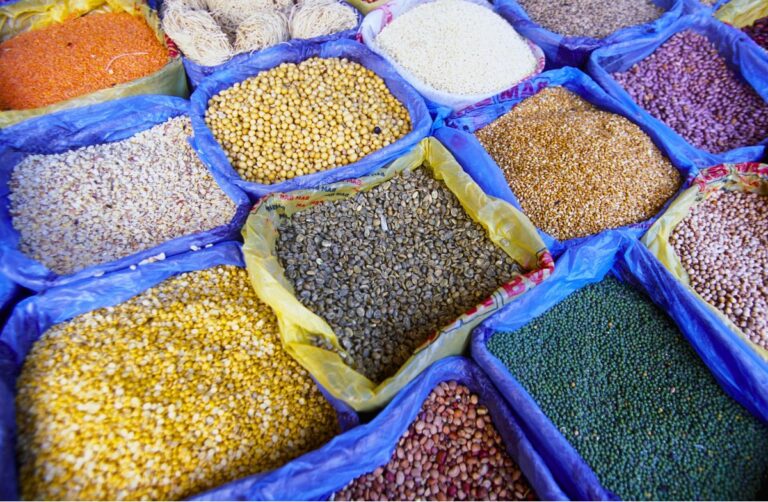
We are reader-supported and may earn a commission on purchases made through links in this article.
Spice Island, known as Zanzibar, has beaches, spice farms, and tasty food. Visitors will not be bored when coming here, but I highly recommend a flavors of Zanzibar spice farm tour and cooking class. I always like learning about another culture’s food because it’s a way to learn more about that culture, and what better way than food to bring people together? On a trip to Zanzibar, I had the chance to learn more about Swahili food from my guide, Lutfia Ussi.
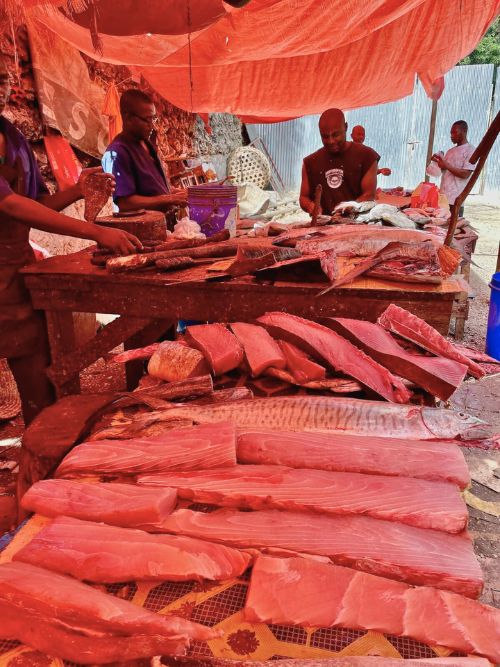
Flavors of Zanzibar with a Visit to Darajani Market
The bubbly Lutfia smiled and laughed when she picked me up at my hotel. Dressed in a lovely gray and white striped abaya with a forest green hijab, she eagerly told me we would have a wonderful day and to ask as many questions as I liked. We got into the van, and the driver, Rashid, greeted me, who was also full of smiles as he was finding some Jason Derulo music.
He appeared to be in his early twenties, wearing an orange collared shirt and jeans and checking to see if the music was okay for me. Laughing, I said anything was good, and then we were off for my flavors of Zanzibar tour. First, we went to the local market, Darajani, the oldest market in Stone Town.
Best Tips & Tools to Plan Your Trip
Men and women sit under large red canopy awnings selling fish, spices, fruits, and vegetables. Lutfia said she goes to the same vendors that her mother goes to. She tries to support as many vendors as possible. Bright red peppers, stacked limes in the shapes of triangles, and purple, yellow, and white eggplants decorate the tables. Remember to drink a coconut while you’re there.
Zanzibar Cooking Class and Flavors of Zanzibar Tour
While shopping here, Lutfia said her mom was the first to offer a flavors of Zanzibar cooking class fourteen years ago. She went to tour agencies and hotels, but they needed help understanding this concept. Eventually, the idea became popular.
Lutfia went on her own and started her own company three years ago. While standing on the side of the road, sweating and waiting for the cars to pass, I decided I should continue asking my questions when we were back in the car.
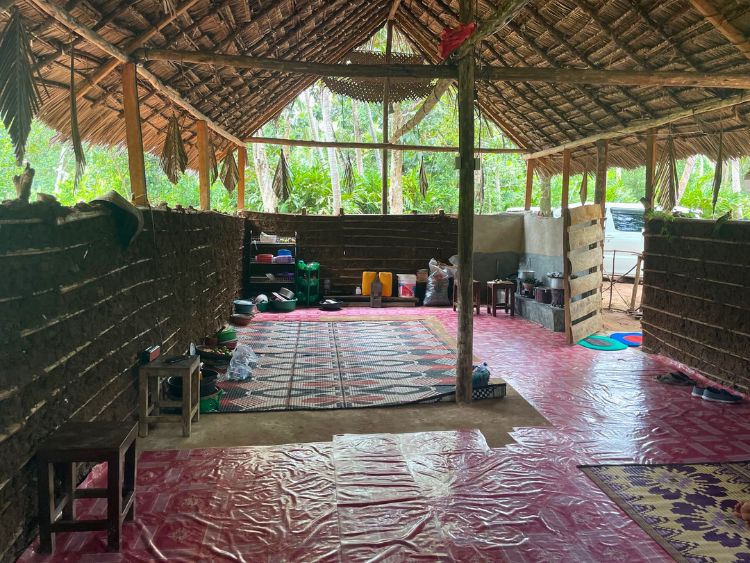
Flavors of Zanzibar at Mtausa Spice Farm
Our next stop was a trip to Mtausa Spice Farm. The six-hectare farm is full of fruit trees and plants. I learned that Cinnamon is the spice queen because the leaf, bark, and root have a purpose.
The root is for medication like the flu, and it smelled like Vic’s vapor rub. The bark goes into the rice, and the leaf is for tea or cakes. It is hard not to miss another tree with raspberry-red colored fur sticking out on the outside fruit, resembling a kiwi, called Annotto.
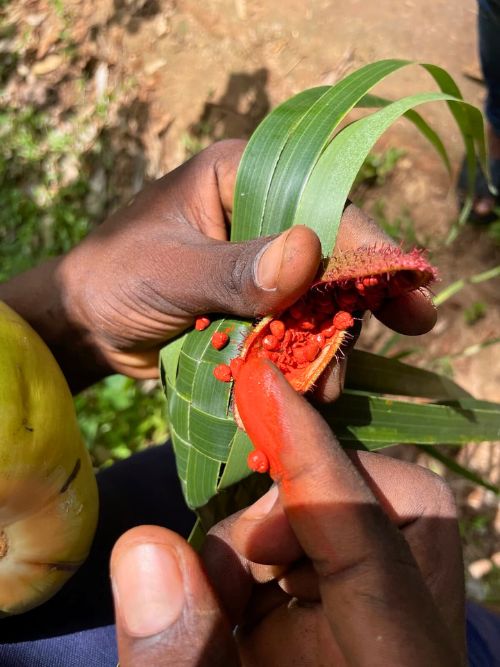
Lipstick and Hairy Jelly Fruit are Important Flavors of Zanzibar
Women use annotto for lipstick. When opening this fruit, it is a deep red color. The seed is now for cooking, but we did not use this seed for the flavors of Zanzibar meal.
I could have continued walking on this farm for hours and hours. Hair jelly fruit was also something new to me. The fruit is for shampoo but mixed with aloe vera and lemon grass. Reminding me of a melon, the inside has this sticky jelly for the shampoo.
Flavors of Zanzibar Lessons to Learn
It is interesting how often we do not think about the products we buy, which contain many chemicals, while other countries use natural ingredients to produce things such as shampoo and lipstick. One last flavors of Zanzibar lesson I learned was that vanilla was the second most expensive spice because it takes three years to plant and process.
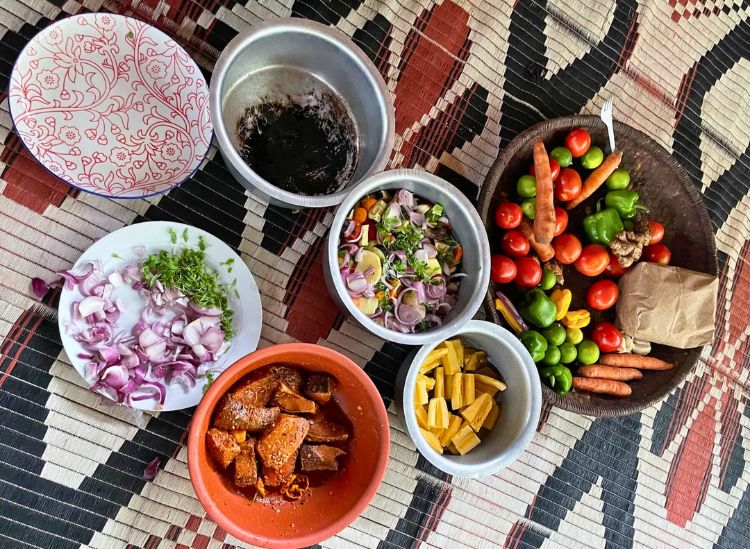
Prepping for Lunch with the Flavors of Zanzibar
My stomach was rumbling, so I was eager for our next part of the tour. We stayed on the farm and started preparing our lunch in the kitchen outside. We would learn how to make fish and spices, curry vegetables in coconut milk, rice with coconut milk, and sweet plantain in coconut milk.
While I was helping to cut vegetables and add spices, including ginger and cumin, to the fish, Lutfia shredded the coconut for our coconut milk. Once the flakes are in the bowl, the bits go into a colander while adding water. Then, after squeezing the flakes, it turns the liquid into milk.
This step is done three or four times, depending on how thick the milk needs to be. Every kitchen has a wooden coconut chair that the women sit on to scrape the coconut with a blade that rests on the front of the chair. Girls learn this technique at the age of seven.

Coconut Milk and the Flavors of Zanzibar
I sat in the chair and eventually scrapped the coconut’s sides into the bowl. It took me a long time, and I was impressed with how fast Lutfia did it. She said she makes fresh milk daily, which takes her thirty minutes.
If there is leftover coconut, she feeds it to the chickens; if there’s time, she dries it and gives it to the factory, which makes oil. Lutfia asked me how I got my coconut milk, and I smiled and said ‘from a can at the store.’ She laughed and said it was okay because different countries have different food preparation methods.
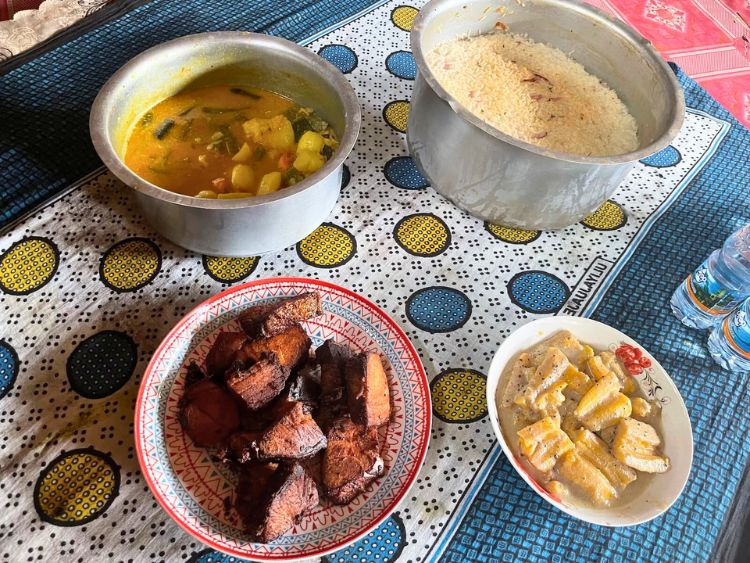
Importance of Flavors of Zanzibar Cooking Classes
I told Lutfia this is another reason why cooking classes are excellent; we can appreciate the hard work it takes to produce food and have access to it.
About an hour later, our food was ready to eat. The cumin, ginger, and cloves from the fish made me drool. The vegetable coconut curry mixed with curry and turmeric spice, along with garlic, ginger and chillies, in addition to rice pilau, fish, and plantains with cinnamon and coconut milk were a hit. I took my time to eat so I could soak up the flavors of Zanzibar and enjoy this fabulous meal.
Feeling at Home on a Flavors of Zanzibar Tour
After a relaxing afternoon on the farm, it was time to return to my hotel. I thanked Lutfia and Rashid for an unforgettable day. Lutfia is full of life, a businesswoman who likes to have fun and has a contagious laugh. She makes you feel at home and says to take plenty of pictures and ask questions.
The flavors of Zanzibar tour was one of my favorite activities on my holiday because I learned about traditional food and learned about different spices and plants, including the plant for shampoo.
I can’t recommend this flavors of Zanzibar tour enough. I learned about spices and food and had even more of an appreciation for food. It was also a chance to learn about the culture.
If You Go
The tour costs $45 and includes transportation, a market trip, a spice farm tour, and a cooking class. Book online here. At the end of the spice farm tour, visitors can buy local spices at the shop.
It is best to apply for an e-visa to avoid long lines at the airport. Click here to apply. I paid $100 and the multiple-entry visa is good for one year. It is possible to apply for an ordinary visa for $50.
Book your stay in Zanzibar here
Read More:
Author Bio: Traveling with friends, solo and in group tours, Erin has explored Southeast and South Asia, Oceania, Europe, the Middle East, South America, East Africa, and South Africa. She is currently a freelance travel writer living in Sur, the Sultanate of Oman. Find her on Instagram @erinshotpot.
- Palawan Perfection: Exploring the Philippines’ Last Ecological Frontier - July 13, 2025
- A Journey to Ashland, Oregon’s Shakespeare Festival - July 13, 2025
- The Ultimate Guide to Cairo’s Top Three Museums: Which Should You Visit? - July 12, 2025

